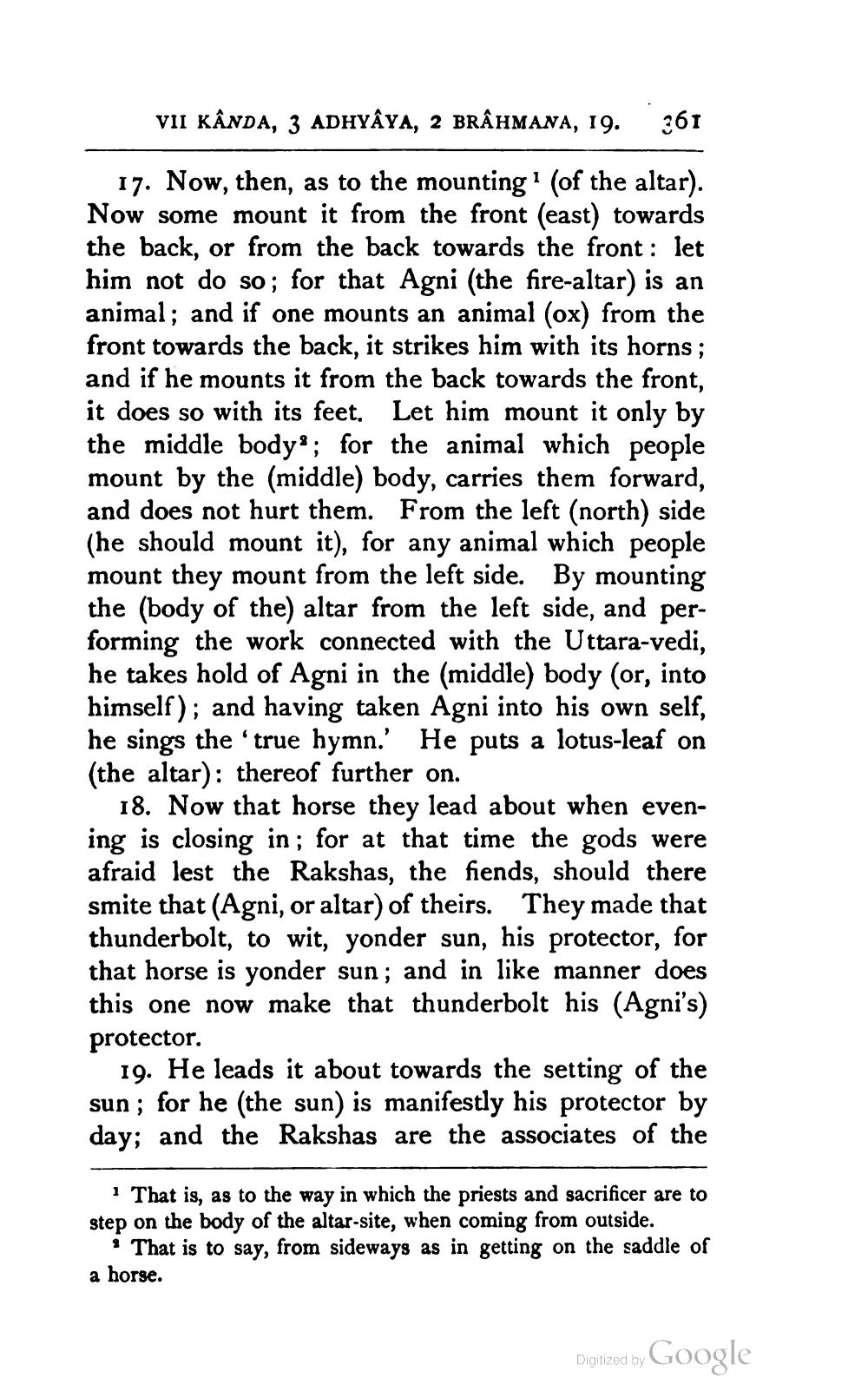________________
VII KÂNDA, 3 ADHYAYA, 2 BRÂHMANA, 19.
261
17. Now, then, as to the mounting (of the altar). Now some mount it from the front (east) towards the back, or from the back towards the front: let him not do so; for that Agni (the fire-altar) is an animal; and if one mounts an animal (ox) from the front towards the back, it strikes him with its horns ; and if he mounts it from the back towards the front, it does so with its feet. Let him mount it only by the middle bodys; for the animal which people mount by the (middle) body, carries them forward, and does not hurt them. From the left (north) side (he should mount it), for any animal which people mount they mount from the left side. By mounting the (body of the) altar from the left side, and performing the work connected with the Uttara-vedi, he takes hold of Agni in the (middle) body (or, into himself); and having taken Agni into his own self, he sings the 'true hymn.' He puts a lotus-leaf on (the altar): thereof further on.
18. Now that horse they lead about when evening is closing in ; for at that time the gods were afraid lest the Rakshas, the fiends, should there smite that (Agni, or altar) of theirs. They made that thunderbolt, to wit, yonder sun, his protector, for that horse is yonder sun; and in like manner does this one now make that thunderbolt his (Agni's) protector.
19. He leads it about towards the setting of the sun; for he (the sun is manifestly his protector by day; and the Rakshas are the associates of the
That is, as to the way in which the priests and sacrificer are to step on the body of the altar-site, when coming from outside.
. That is to say, from sideways as in getting on the saddle of a horse.
Digitized by Google




